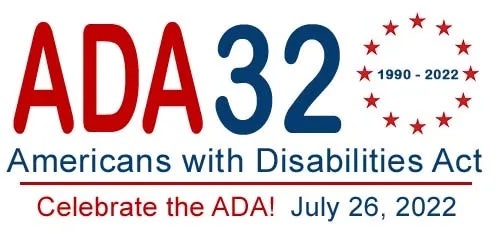Charting a path for the future of digital accessibility

Image Credit: Adobe Stock/Seventyfour.
In 1990, the Americans with Disabilities Act (ADA) was signed into law to create protections for people with disabilities, banning discrimination in areas such as education, jobs, transportation, and public and private places. Now, 32 years later we continue to celebrate the ADA’s anniversary and the strides we’ve made since its passage into law, but we also recognize the need to think critically about how private and public sectors can take greater action to prioritize accessible experiences.
The ADA set the wheels in motion, but the reality is that there are still barriers for users with disabilities across digital environments. To create more equitable access for people with disabilities online, there needs to be clarification on application of the ADA. Clearly, digital technology looks significantly different since the ADA was signed in the 90’s, and online tools have become indispensable to help navigate everything from education to health care to remote work opportunities. Despite these online tools now being necessities, many parts of the internet could benefit from improvements in accessibility.
A recent letter from United States Senators to the Department of Justice reiterates this issue and requests a resumption of rulemaking processes as an essential next step to help ensure the ADA’s protections are upheld for the digital era, and it is a responsibility of both regulators and private companies to make accessibility a priority. Adobe supports the call for additional rules to clarify that the ADA applies to the Internet and is committed to working with the Department of Justice, end users, advocacy groups, and other companies to help ensure that it is clear what companies need to do to offer accessible content and applications that improve end user experiences and opportunities.
Making a difference today
In the absence of regulatory clarity, the role of private companies in helping make improvements should not be ignored, and it is up to all of us to help make sure we are aware and taking the right steps to create accessible experiences. It is important to educate and build awareness around accessibility and the needs of the disability community, and we also need to build accessibility into the earliest stages of the development cycle and user experience; here are a few ways to get started:
- Collaborate with employees with disabilities. It’s essential to listen, recognize and act on feedback when creating new experiences, websites or digital tools. A company should also explore opportunities to work with focus groups, including people with disabilities, to help ensure a variety of needs are being addressed. Enhancements made to digital experiences that are meant to address disabilities can create a better user experience for everyone, regardless of ability.
- Prioritize usability testing. When creating new digital experiences, creating accessibility personas can help UX designers identify specific needs and issues for people who are blind or have low-vision, deaf, low mobility or dexterity, or cognitive disabilities. For example, a persona of an individual in their late 60’s with low vision can help designers anticipate potential needs for user experiences with larger sized fonts and other visual support options.
- Build accessibility trainings into your company culture. Progress toward accessible experiences doesn’t happen in a silo, which is why it is essential to host regular employee trainings that help teams understand the challenges faced by people with disabilities and the company’s opportunities to build accessibility into product and digital experience roadmaps.
- Evaluate digital workplace tools for accessibility. Beyond the products and digital experiences a company delivers to its users, it is also essential to make sure employees with disabilities have tools that meet their needs and allow them to work comfortably and efficiently. Adobe is evaluating third-party vendors and partners that provide digital workplace tools and has updated its Business Partner Code of Conduct and contract language to encourage the purchase of accessible tools for employees.
These tips can help improve digital accessibility today, but as we all know the internet continues to evolve. We’re now entering discussions around extended reality, combining real-and-virtual environments with human-machine interactions to create an augmented or virtual reality. With this, companies need to ask themselves how they can have accessibility teams involved from the start to anticipate the needs of people with disabilities as these tools and experiences become more widely adopted.

Image Credit: ADA National Network — 1-800-949-4232.
Adobe’s commitment to digital accessibility
At Adobe, we believe that when people feel respected and included they can be more creative, innovative, and successful. While we have more work to do to advance diversity and inclusion, we’re investing to move our company and industry forward. Developing accessible experiences is a learning process that requires continual investment and education to help ensure we are updating and innovating accessibility features into our products. Our focus on accessibility has been recognized in the Disability Equality Index as one of 2022’s “Best Places to Work for Disability Inclusion.” We are delighted to meet the Disability Equality Index’s standards but continue to recognize the need to keep evolving. We are continuing to make progress on our accessibility practices to help keep up with the fast-paced changes in the digital space.
Future of digital accessibility
The ADA has served as the standard for protections for the disability community for over 30 years, and as we reflect on the changing digital environment, we must continue to adapt our practices and advocate for standards and regulations to clarify expectations for private and public sectors to do their part to create accessible experiences.
Please join us in celebrating this day and in continuing to help make the world a better place for everyone.